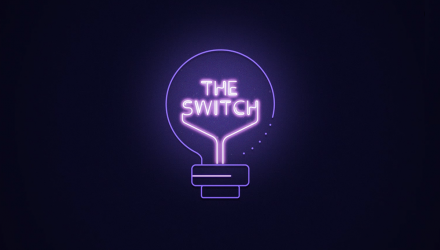This season of “The Switch” is focused on the mechanics of ETFs. In this episode, host Ren Leggi, Client Portfolio Manager for ARK Invest, and ETF Trends’ CEO Tom Lydon and CIO Dave Nadig discuss the creation/redemption process, the secret sauce that makes ETFs so special and distinct from mutual funds.
When you, the investor, give money to a mutual fund company in order to buy shares, the fund manager takes that cash and buys the underlying securities on your behalf. “It’s very simple,” says Nadig.
But an ETF is different, because individual investors are not giving any money directly to the ETF issuer. Instead, you buy shares of the ETF on the open market. Special market makers known as authorized participants are the only ones who transact directly with the fund company. They do so by giving a pro rata slice of the stocks in the ETF’s portfolio, explains Nadig, and in return receive a set number of ETF shares (usually 10,000 or 50,000 shares) known as a creation unit. (The process works in reverse: APs can provide a creation units worth of ETF shares to the ETF issuer and receive the underlying securities. This is known as redemption.)
“Money goes in and out of the fund only in whole slices of the portfolio, in specific stocks and securities that the portfolio manager actually wants,” he says. This has all sorts of implications. “From an investor’s perspective, what it means is you can trade this anytime you want on the open market, and you don’t have to worry about how that money ends up in a portfolio.”
With that in mind, Leggi goes on to explain what that means for an ETF portfolio manager when there’s no worry about cash going in and out of the fund. For starters, more time can be spent focusing on portfolio construction. And when there are a lot of inflows in a short amount of time, there’s no concern about liquidity, because those shares were being received in-kind through that creation process.
ETF Redemption Is Key
Leggi also notes that the same is true in reverse, should there be a massive number of redemption requests. ARK, in this case, would provide those underlying shares to the authorized participants, as it’s their job to create liquidity, a job which pays very well. Unlike with mutual funds, where each redemption of the fund can impact the investors remaining in the fund, ETF investors are shielded from experiencing any tax impact, should someone else cash out of the fund.
“That’s one of the advantages of having this growth in ETF wrappers,” Leggi adds.
There are $6 trillion in assets invested in ETFs, notes Lydon, the vast majority of which is index-based. ARK’s funds are not, however. How can ARK’s active management strategy be enacted without incurring capital gains–and thus a taxable event for shareholders?
It’s because of the “in-kind” nature of creation/redemption, explains Nadig. In a redemption, the underlying portfolio securities are handed back out to the authorized participant in exchange for ETF securities–meaning, no sale took place, and thus no chance for capital gains or losses to be notched. The same thing happens on the way in: There’s no purchase in an ETF creation. As such, the ETF can constantly reset its cost basis higher, which means even if ARK is making daily trades, those small gains are offset by the constant washing of the bases due to creation and redemption.
“You only have to worry about taxes on your experience when you buy and where you sell,” Nadig notes.
Additionally, Leggi explains how being an active manager within the ETF wrapper gives added advantages over a passive investment. There are no forced choices, so managers can choose opportunities based on what’s happening in the market at a given moment rather than what an index dictates. That flexibility can be powerful–and is often overlooked.
For more episodes, check out The Switch Video Series playlist.
For more news, information, and strategy, visit the Disruptive Technology Channel.

